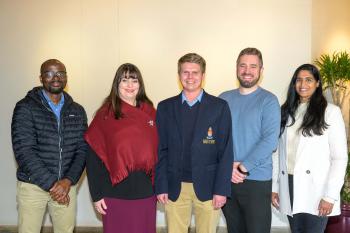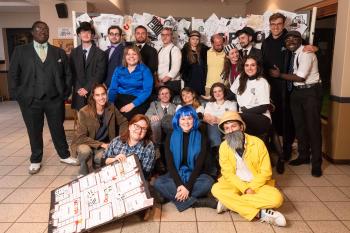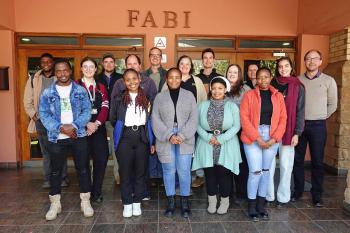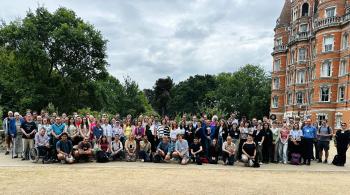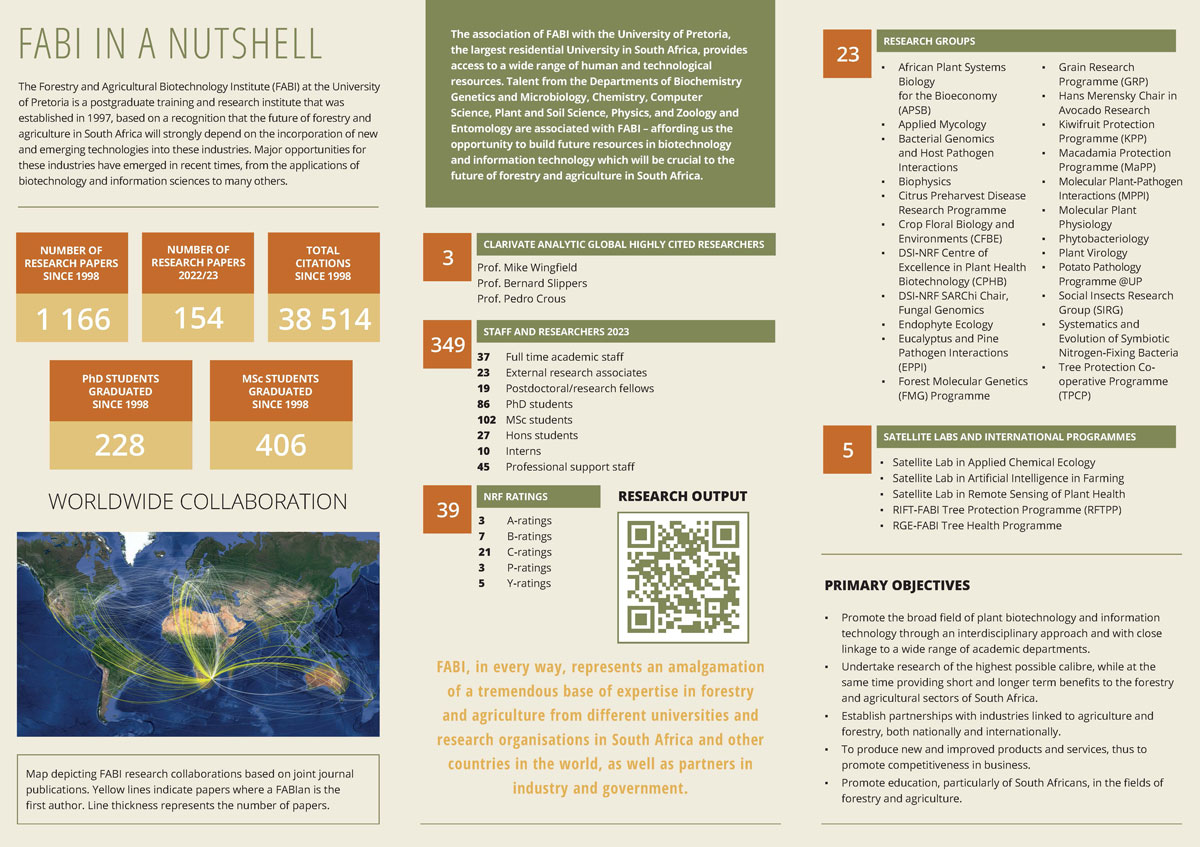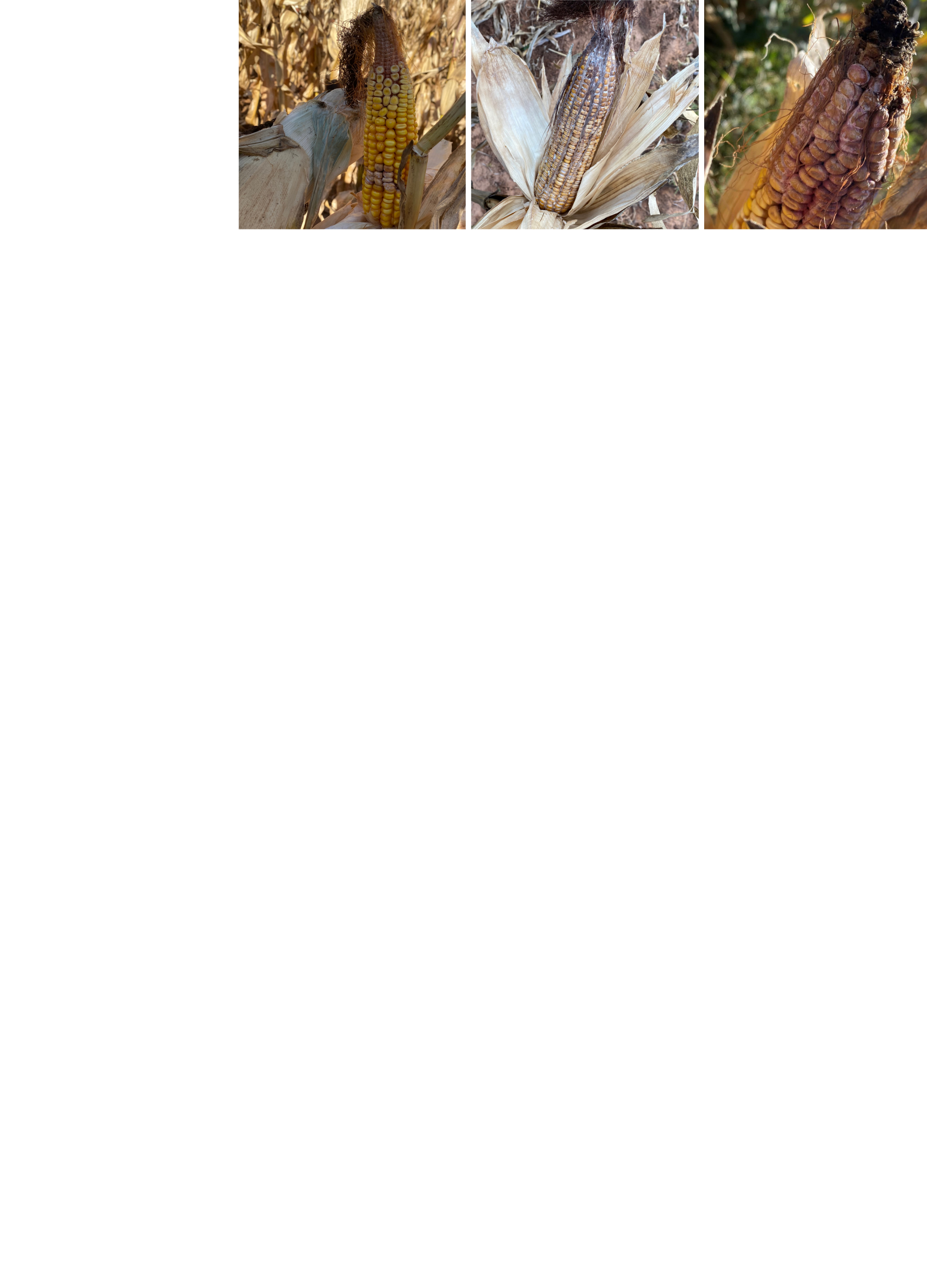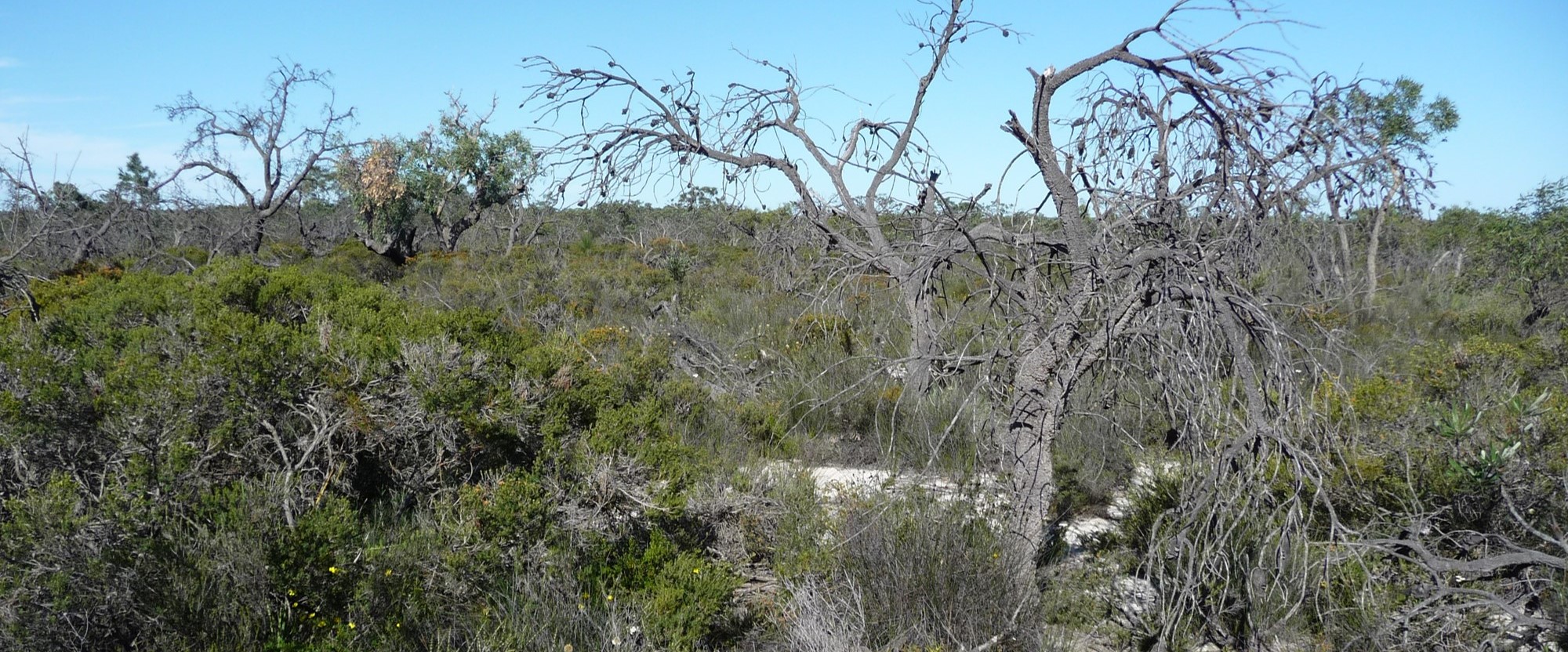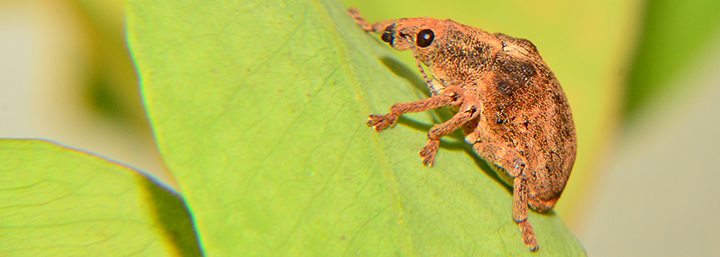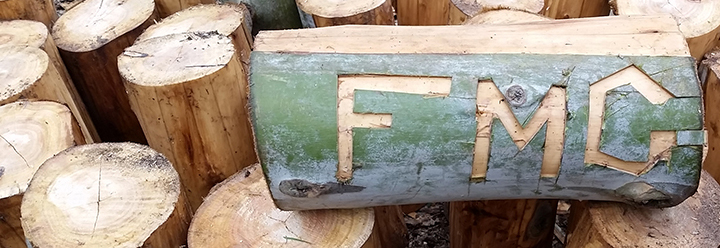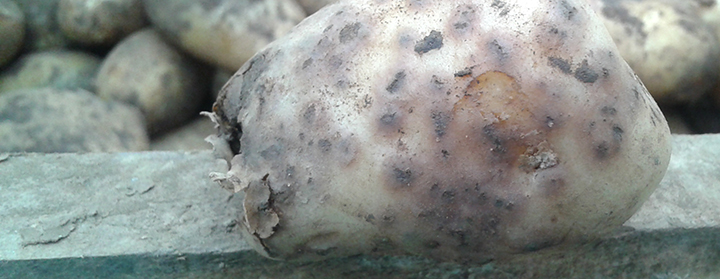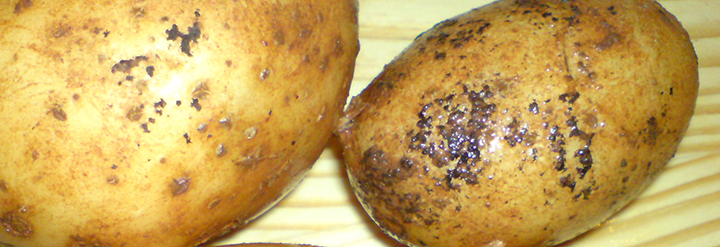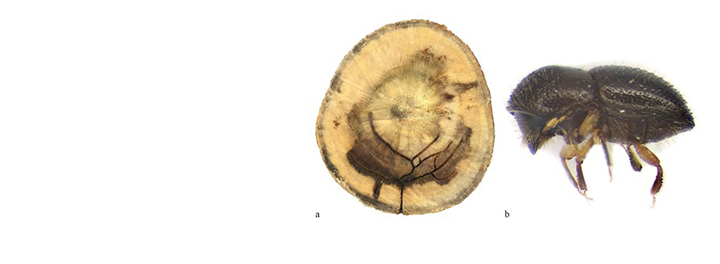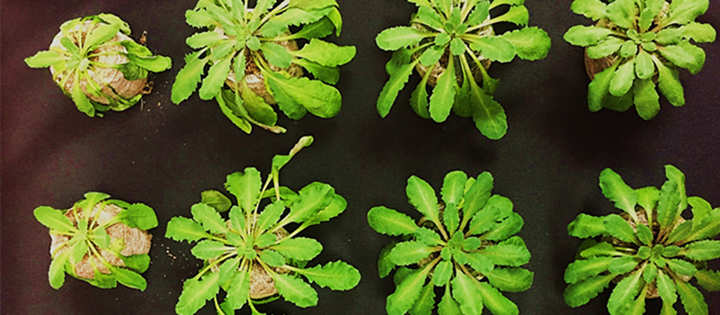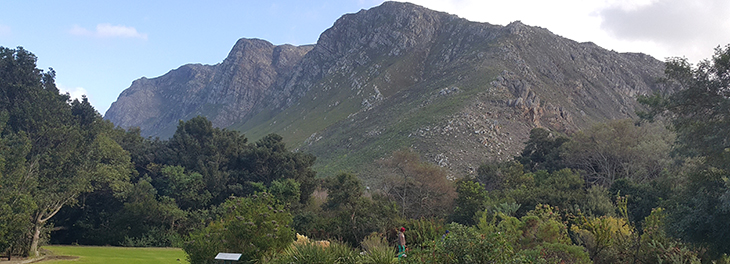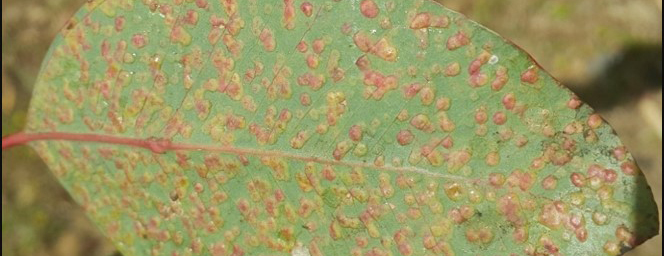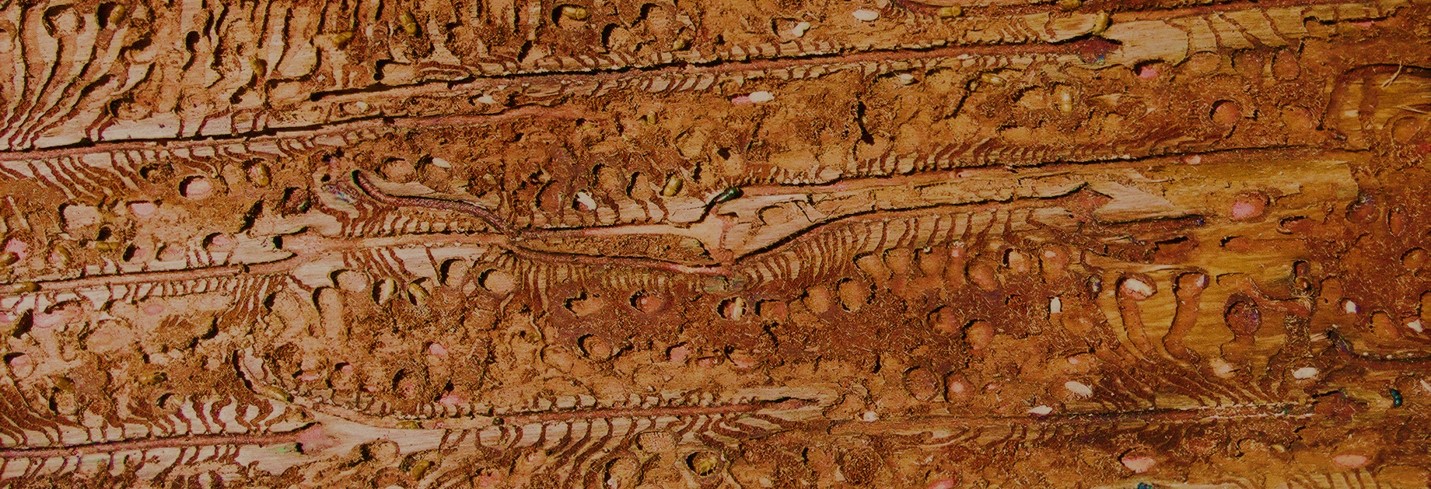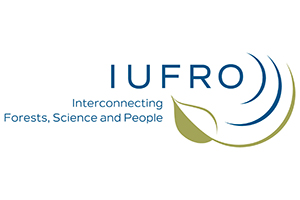Videos
![]() The impact of a tiny beetle and its deadly fungus on South Africa’s forests (Youtube 36 min) by Prof. Wilhelm de Beer, presented at the National Science and Technology Forum (NSTF) for Plant Health in South Africa on 10 June 2021.
The impact of a tiny beetle and its deadly fungus on South Africa’s forests (Youtube 36 min) by Prof. Wilhelm de Beer, presented at the National Science and Technology Forum (NSTF) for Plant Health in South Africa on 10 June 2021.
Ecological and economic impact of the polyphagous shot hole borer (YouTube, 5 min; 2022) by Stellenbosch University. Click here to view.
International Year of Plant Health: The Polyphagous Shothole Borer’s effect on South Africa's trees (YouTube video 2.18min; 2020) by the University of Pretoria. Click here to view.
FABI Research Features
The potential economic impact of the polyphagous shot hole borer invasion in South Africa
Non-FABI Publications
Bierman A., F. Roets, J.S. Terblanche (2022) Population structure of the invasive ambrosia beetle, Euwallacea fornicatus, indicates multiple introductions into South Africa. Biological Invasions. 10.1007/s10530-022-02801-x.
de Jager M., F. Roets (2022) Pathogenicity of Fusarium euwallaceae towards apple (Malus domestica) and grapevine (Vitis vinifera). Australasian Plant Disease Notes 17. 10.1007/s13314-022-00456-0.
de Jager M., F. Roets (2022) Rapid and cost-effective detection of Fusarium euwallaceae from woody tissues. Plant Pathology. 10.1111/ppa.13600.
FABI News
Collection of Ambrosia beetle infested material in Durban
14th Online meeting of the Bark Beetle Mycobiome Network
University of Pretoria protects trees against PSHB infestation
Scouting for native natural enemies of PSHB
SANBI Sentinel Plant Project hosts a training workshop for DUT horticulture students
The PSHB takes FABI researchers to Somerset West
Polyphagous Shot Hole Borer online resource
Inspection of invasive disease and pest problems in SANBI's Cape gardens
Prof. Wilhelm de Beer receives the SAIF Distinguished Forestry Award
A webinar on Plant Health in Botanical Gardens amid the COVID-19 pandemic
Getting a PSHB research project done before the lockdown
PSHB is spreading in the Western Cape
Monitoring plant health in botanic gardens and arboreta across South Africa
PSHB survey in Northern Cape Pecan orchards
Shothole Borer meetings in the Cape Peninsula
PSHB fungus tested for pathogenicity on commercial forest trees
Shot Hole borer projects launched in forests of the Southern Cape
Shot Hole Borer invasion places FABI in the spotlight
FABI research work features on Carte Blanche
Tree health experts inspect PSHB infestation in Johannesburg suburbs
FABI Team surveys Johannesburg gardens for PSHB infestations
The impact of the Polyphagous Shothole Borer in South Africa explained in a public seminar at FABI
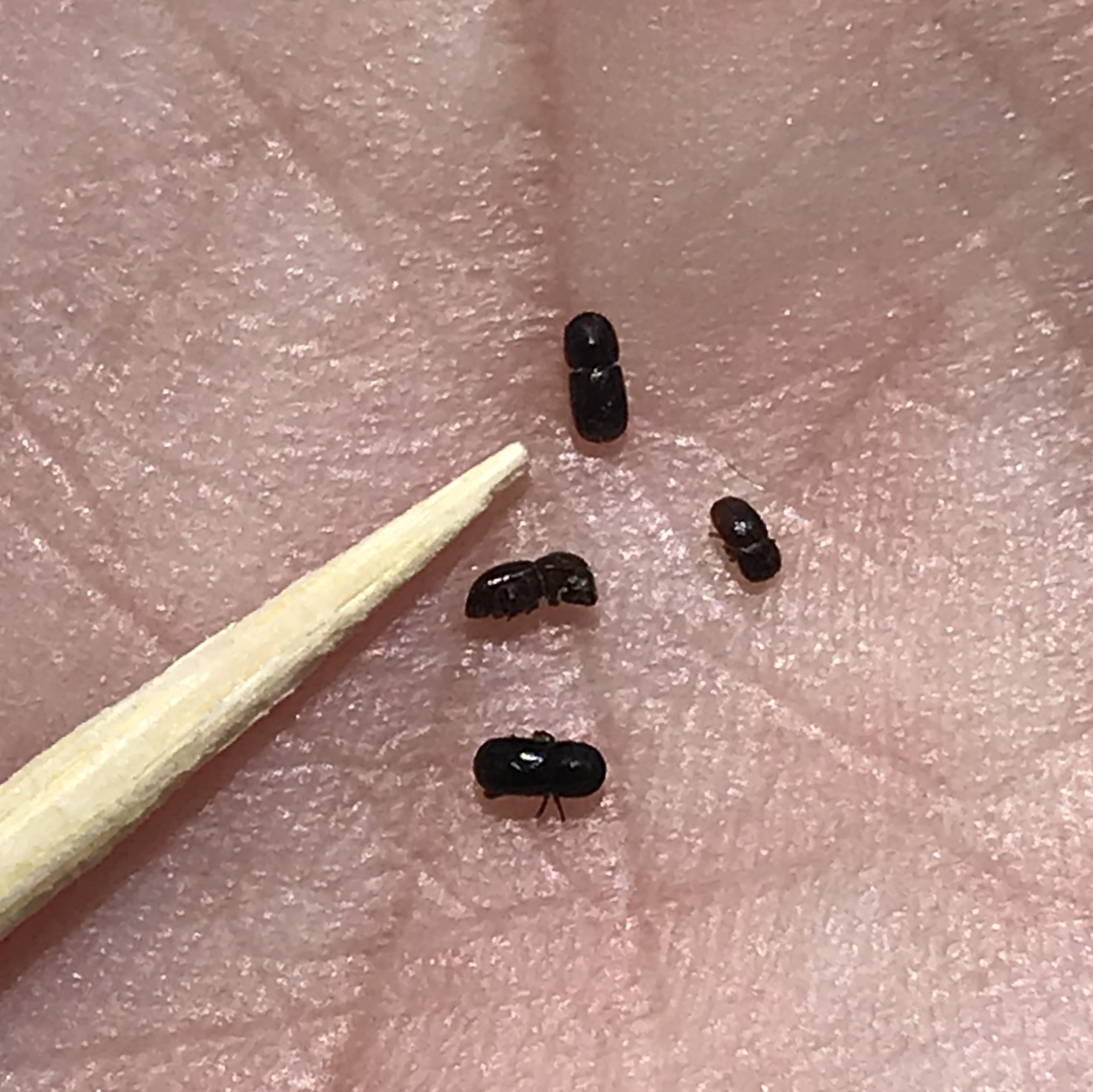
The PSHB is a 2mm long ambrosia beetle native to Southeast Asia that has a symbiotic relationship with three species of fungi. These include the tree pathogen, Fusarium euwallaceae. This fungus provides a food source for the beetle and its larvae, but in susceptible trees, it kills the vascular tissue, causing branch dieback and tree death.
In its native environment in Southeast Asia, it seems as if the beetle and fungus do not cause serious damage because tree species have evolved with the beetle-fungus complex and have resistance towards them, and because there are most likely a suite of natural enemies of the beetle. However, the beetle and fungus were somehow introduced into Israel and California in the early 2000s where they caused serious damage on several ornamental trees as well as avocado trees. In South Africa the impact of the beetle to date is most visible on ornamental trees.
Identification and species name of the beetle
Until December 2018 the PSHB was known as Euwallacea nr. fornicatus. However, Gomez et al. (2018) showed with DNA sequences that 'Euwallacea fornicatus' is actually a species complex including four closely related, but distinct species. These four species of Shot Hole Borer are very similar in shape, and can only be distinguished by specialists under a microscope or with DNA sequences. The four species carry different fungal species, have different host ranges, and different geographical distributions (Gomez et al. 2018). Although they suggested the name Euwallacea whitfordiodendrus should be used for the PSHB, this was an error that was corrected in a subsequent paper by Smith et al. (2019). The correct names of four Shot Hole Borer species in the E. fornicatus complex are:
1. Tea Shot Hole Borer A [TSHB-a = Euwallacea perbrevis (Schedl 1951)]
Distribution: Asia (American Samoa, China, Indonesia, Papua New Guinea, Samoa, Sri Lanka, Taiwan, Thailand), Australia, and introduced in the USA (Florida and Hawaii)
2. Tea Shot Hole Borer B [TSHB-b = Euwallacea fornicatior (Eggers 1923)]
Distribution: Asia (Malaysia, Papua New Guinea, Singapore, Sri Lanka)
3. Polyphagous Shot Hole Borer [PSHB = Euwallacea fornicatus (Eichhoff 1868), previously referred to as Euwallacea nr. fornicatus and Euwallacea whitfordiodendrus (Schedl 1942)]
Distribution: Asia (China, Hong Kong, Japan, Taiwan, Thailand, and Vietnam) and introduced in USA (California), Israel, South Africa, and Western Australia
4. Kuroshio Shot Hole Borer [KSHB = Euwallacea kuroshio Gomez and Hulcr 2018]
Distribution: Asia (Indonesia, Japan, and Taiwan) and introduced in Mexico and USA (California)
To date, only the PSHB has been found in South Africa. However, both the PSHB and KSHB have invaded California, while TSHB-a has invaded Florida. These species carry similar fungi, have similar life styles and similar effects on trees. With our borders being open for trade to Southeast Asia, the risk that one of the other species can be introduced is very high. Co-occurring species increase the chances for interbreeding which will enhance the adaptability of the beetles to new hosts and new environments, posing a greater threat. From a management perspective, they are dealt with in the same ways. In California they have thus started referring to the PSHB and KSHB jointly with the single term Invasive Shot Hole Borers (ISHB). It is recommended that for management and legislative purposes we also adopt the term ISHB in South Africa.
The Polyphagous Shot Hole Borer is an ambrosia beetle native to Southeast Asia. The beetle has a symbiotic relationship with the fungus Fusarium euwallaceae, which causes branch die-back and can kill susceptible trees. In 2017 the presence of this pest was confirmed in South Africa by the FABI team, and it has since been found in all provinces except Limpopo. This makes the PSHB invasion in South Africa the largest geographical outbreak of this beetle in the world. It is affecting trees in all sectors: the agricultural and commercial forestry sector, urban trees (public spaces, streets, gardens), as well as native trees in natural forests.
At present researchers at FABI, in collaboration with colleagues from several other Universities, are coordinating monitoring efforts and leading research on the PSHB and its fungus in South Africa. The purpose of this webpage is to provide:
1. Background information on the PSHB and its management to the general public and all stake holders,
2. Updated information on its distribution and its host trees in South Africa,
3. Feedback on ongoing research and monitoring efforts by the PSHB Research Network, and
4. A platform for the public to make us aware of possible new host trees of PSHB and localities where it occurs.
New Publications
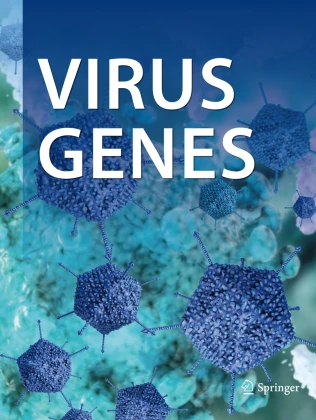 Hough B, Wingfield B, Read DA. (2024) Identification and characterization of mycoviruses in transcriptomes from the fungal family Ceratocystidaceae. Virus Genes
10.1007/s11262-024-02112-4
Hough B, Wingfield B, Read DA. (2024) Identification and characterization of mycoviruses in transcriptomes from the fungal family Ceratocystidaceae. Virus Genes
10.1007/s11262-024-02112-4  Read DA, Pietersen G, Slippers B, Steenkamp E. (2024) Genomic characterization of novel viruses associated with Olea europaea L. in South Africa. Archives of Virology 169
10.1007/s00705-024-06132-1
Read DA, Pietersen G, Slippers B, Steenkamp E. (2024) Genomic characterization of novel viruses associated with Olea europaea L. in South Africa. Archives of Virology 169
10.1007/s00705-024-06132-1 

